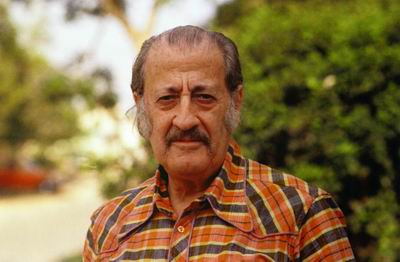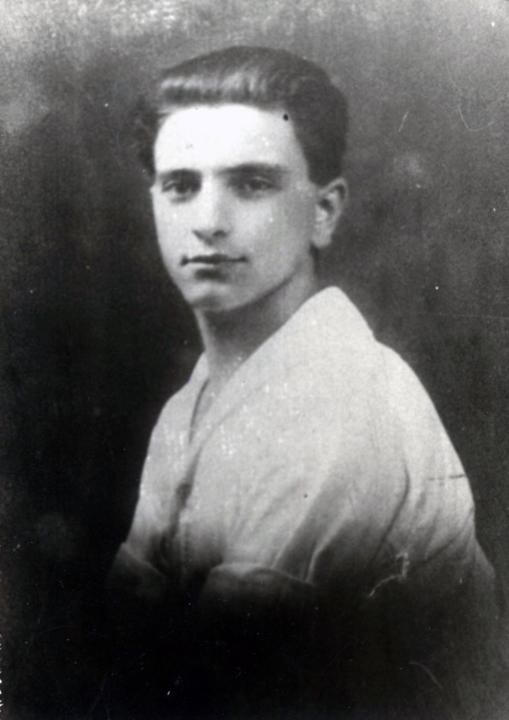|
Beit Castel
The Beit Castel gallery (House Of Castel), בית קסטל, is a gallery in the Artists' Colony of Safed (Also known as Tzfat or Zefat). It is unique in its adherence to hosting art of a diverse range of artists from the Artists' Quarter of Safed with a special focus on the golden age of art in Safed. History Beit Castel used to be the home of the renowned Israeli artist: Moshe Castel. The house that over time decayed was sold by Moshe Castel to his friend Yakov Hadad. Yakov Hadad as a boy was the court boy of Israeli giants such as Yitzhak Frenkel Frenel and Moshe Castel and used to assist others such as Nahum Gutman in order to make a bit of money for his family. Yakov Hadad has since rebuilt the gallery, turning the house itself into a fascinating work of art. In fact, the house (now gallery) itself is located in incredible proximity to the houses of artists such as Shimshon Holzman and Yitzhak Frenkel Frenel in Yitzhak Frenkel Frenel/Moshe Castel streets (Tet'Vav/Tet'Za ... [...More Info...] [...Related Items...] OR: [Wikipedia] [Google] [Baidu] |
Safed
Safed (known in Hebrew language, Hebrew as Tzfat; Sephardi Hebrew, Sephardic Hebrew & Modern Hebrew: צְפַת ''Tsfat'', Ashkenazi Hebrew pronunciation, Ashkenazi Hebrew: ''Tzfas'', Biblical Hebrew: ''Ṣǝp̄aṯ''; ar, صفد, ''Ṣafad''), is a city in the Northern District (Israel), Northern District of Israel. Located at an elevation of , Safed is the highest city in the Galilee and in Israel. Safed has been identified with ''Sepph,'' a fortified town in the Upper Galilee mentioned in the writings of the Roman Jewish historian Josephus. The Jerusalem Talmud mentions Safed as one of five elevated spots where fires were lit to announce the Rosh Chodesh, New Moon and festivals during the Second Temple period. Safed attained local prominence under the Crusaders, who built a large fortress there in 1168. It was conquered by Saladin 20 years later, and demolished by his grandnephew al-Mu'azzam Isa in 1219. After reverting to the Crusaders in a treaty in 1240, a larger fortress wa ... [...More Info...] [...Related Items...] OR: [Wikipedia] [Google] [Baidu] |
Moshe Castel
Moshe Castel ( he, משה קסטל; 1909 – December 12, 1991) was an Israeli painter. Biography Moshe Elazar Castel born in Jerusalem, Ottoman Palestine, in 1909, to Rabbi Yehuda Castel and his wife Rachel. The family was descended from Spanish Jews from Castile who immigrated to the Holy Land after the expulsion of the Jews from Spain in 1492. His father was born in Hebron. He opened religious schools for Sephardi boys in the Nahalat Shiv'a and Bukharim quarters of Jerusalem. Moshe grew up in the Bukharim neighborhood, where he attended his father's school. At the age of 13, he was accepted to the Bezalel Art School, directed by Boris Schatz, where he studied from 1921 to 1925. His teacher, Shmuel Ben David, encouraged him to study art in Paris. Castel traveled to Paris in 1927, where he attended Académie Julian and Ecole du Louvre. He sat in the Louvre copying the works of Rembrandt, Velasquez, Delacroix and Courbet, intrigued by their paint-layering techniques ... [...More Info...] [...Related Items...] OR: [Wikipedia] [Google] [Baidu] |
Yitzhak Frenkel
Yitzhak Frenkel ( he, יצחק פרנקל; 1899–1981), also known as Alexandre Frenel, was an Israeli painter and sculptor, seen as the father of modern art in Israel. One of the most important Jewish artists of the l’École de Paris and its chief practitioner in Israel, gaining international recognition during his lifetime and exhibiting his work across the world. Considered the father of modern Israeli art. He is accredited with bringing the influence of the l’École de Paris to Israel, which until then was dominated by Orientalism. Early life: Odessa 1899-1919 Yitzhak Frenkel was born in 1899 in Odessa, Russian Empire. He was a great-grandson of the famous Rabbi Levi Yitzchok of Berditchev. In his youth he studied in a yeshiva where he met Chaim Glicksberg. As a child he lived right next to Bialik's and Rawnitzki's publishing house "Moriah". In 1917, he studied under Aleksandra Ekster, an influential constructivist, cubist and futurist teacher and painter at the ... [...More Info...] [...Related Items...] OR: [Wikipedia] [Google] [Baidu] |
Nachum Gutman
Nachum Gutman (as he himself signed; alternate romanisation: Nahum Gutman; he, נחום גוטמן: October 5, 1898 – November 28, 1980) was a Moldovan-born Israeli painter, sculptor, and author. Biography Nachum Gutman was born in Teleneşti, Bessarabia Governorate, then a part of the Russian Empire (now in the Republic of Moldova). He was the fourth child of Sim a Alter and Rivka Gutman. His father was a Hebrew writer and educator who wrote under the pen name S. Ben Zion. In 1903, the family moved to Odessa, and two years later, to Ottoman Palestine. In 1908, Gutman attended the Herzliya Gymnasium in what would later become Tel Aviv. In 1912, he studied at the Bezalel School in Jerusalem. In 1920–26, he studied art in Vienna, Berlin and Paris. Gutman was married to Dora, with whom he had a son. After Gutman's death in 1980, Dora asked two Tel Aviv gallery owners, Meir Stern of Stern Gallery and Miriam Tawin of Shulamit Gallery, to appraise the value all of the work ... [...More Info...] [...Related Items...] OR: [Wikipedia] [Google] [Baidu] |
Shimshon Holzman
Shimshon Holzman (variant name: Shimson Holzman; he, שמשון הולצמן; 1907–1986) was an Israeli landscape and figurative painter. He is known worldwide for his water color paintings. Background Holzman was born in 1907, in Sambir, Galicia. He immigrated to Mandate Palestine from Vienna, Austria in 1922, settled in Tel Aviv, and began working as a house painter with his father. In 1926, Holzman began private studies under Yitzhak Frenkel at the studio of painting arts of the Histadrut School where he also worked with Mordechai Levanon, Ziona Tajar, Avigdor Stematsky, Yehezkel Streichman, Moshe Castel, and Arie Aroch. In 1929, he made his first of several influential visits to Paris, France. There, he studied at the Académie de la Grande Chaumière and exhibited frequently. Israeli art scholar Gideon Ofrat writes of Holzman's time in France: he "brought from Paris impeccably French interiors and landscapes in expressionistic oils, but replaced them with lighthear ... [...More Info...] [...Related Items...] OR: [Wikipedia] [Google] [Baidu] |
Rolly Schaffer
Rolly Schaffer was born in Bucharest, Romania in 1947. Known for his Pointillist and neo-impressionist art. His work was marked by a synthesis of European Art and inspiration from Safed and its atmosphere. He lived in Romania, France and Israel where he died in 2011 in Israel. Several of his works are displayed in Beit Castel Gallery in Safed. Biography and Education Rolly Schaffer was born in Bucharest, Romania in 1947. Known for his Pointillist and neo-impressionist art. He often painted his adopted town Safed. He studied art at the Nicolai Grigorescu Academy of Art (under surrealistic painter Jules Perahim). Rolly Schaffer moved with his family to Paris in 1964 for 2 years after which they settled in Safed, Israel. In Safed he studied under Yitzhak Frenkel Frenel. After his military service, he finished his studies in the Grand Chamiere in Paris. After two years he returned and settled in Safed, joining other painters such as Moshe Castel, Shimshon Holzman, Yitzhak Frenke ... [...More Info...] [...Related Items...] OR: [Wikipedia] [Google] [Baidu] |
Pomegranate Tree In Beit Castel, Safed, Israel
The pomegranate (''Punica granatum'') is a fruit-bearing deciduous shrub in the family Lythraceae, subfamily Punicoideae, that grows between tall. The pomegranate was originally described throughout the Mediterranean region. It was introduced into Spanish America in the late 16th century and into California by Spanish settlers in 1769. The fruit is typically in season in the Southern Hemisphere from March to May, and in the Northern Hemisphere from September to February. As intact sarcotestas or juice, pomegranates are used in baking, cooking, juice blends, meal garnishes, smoothies, and alcoholic beverages, such as cocktails and wine. Pomegranates are widely cultivated throughout the Middle East and Caucasus region, north and tropical Africa, Iran, Armenia, the Indian subcontinent, Central Asia, the drier parts of Southeast Asia, and the Mediterranean Basin. Etymology The name pomegranate derives from medieval Latin "apple" and "seeded". Possibly stemming from the ... [...More Info...] [...Related Items...] OR: [Wikipedia] [Google] [Baidu] |
Blue Door In Beit Castel Gallery, Safed, Israel
Blue is one of the three primary colours in the RYB colour model (traditional colour theory), as well as in the RGB (additive) colour model. It lies between violet and cyan on the spectrum of visible light. The eye perceives blue when observing light with a dominant wavelength between approximately 450 and 495 nanometres. Most blues contain a slight mixture of other colours; azure contains some green, while ultramarine contains some violet. The clear daytime sky and the deep sea appear blue because of an optical effect known as Rayleigh scattering. An optical effect called Tyndall effect explains blue eyes. Distant objects appear more blue because of another optical effect called aerial perspective. Blue has been an important colour in art and decoration since ancient times. The semi-precious stone lapis lazuli was used in ancient Egypt for jewellery and ornament and later, in the Renaissance, to make the pigment ultramarine, the most expensive of all pigments. In the eigh ... [...More Info...] [...Related Items...] OR: [Wikipedia] [Google] [Baidu] |




